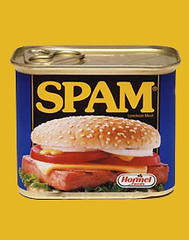More than 82 percent of the marketers surveyed indicated that they plan to increase e-mail marketing this year. That’s a whole lot of e-mails.
Why? As much as everybody complains about e-mail advertising, it seems to work. The Direct Marketing Association (DMA) even released a report that says e-mail ROI can hit as much as $45.65 on every dollar spent, which is twice as much ROI earned from other mediums.
This study mirrors other industry specific releases sent out by the DMA, including one that predicted e-mail from the insurance industry will increase as much as 23.4 percent in the next few years. The insurance industry is not alone. E-mail advertising has become a red-hot choice among marketers nationwide.
Except. There are some things working against e-mail ROI. There is the increasing pressure on state legislatures by the public. There are the issues that cross over into the Federal Trade Commission’s consideration of online advertising. And, of course, there is the growing problem of over saturation.
Simply put, the more e-mail advertisements that consumers receive, the less effective the medium will become and the more likely it will be prone to stricter regulation. There are other considerations too, including that the DMA study on ROI in terms of dollars does not adequately consider long-term brand consequences or negative impressions. It also doesn’t consider the risks that more consumers associate with it.
Like most advertising and communication, direct e-mail advertising is a tool. It does not work for all companies or products, and can even be detrimental for some. Inc. recently published a great column that helps temper the hype and brings it back into focus.
Personally, before considering an e-mail campaign, I think many companies are better off thinking about a well-executed social media plan. Social media can be equally, if not more, effective because it allows the consumer to receive information when they want it and how they want it: RSS feed, e-mail subscription, social network announcement, Google search, etc.
Sure, social media, such as a blog, is considered passive by comparison. But then again, the communication doesn’t rely exclusively on an e-mail list either. In other words, while more than 70 percent of marketers said they intend to use e-mail to enhance consumer relationships, one wonders if consumers share their point of view.

















5 comments:
I guess they need immediate ROI, or else... That always seems to be the cause of these unfortunate campaigns! One percent results to piss off 40%!
Geoff,
Exactly that!
Sure, ROI doesn't have to be return on the dollar, but it often means exactly with we're talking about direct response. Short-term goals often end up as short-term results, eventually loosing 40 percent off each intrusive advertisement until there is no one left to lose. It works the other way too.
I once worked for a gaming property years ago that continually increased their offerings, until one day, they had increased them so much and the margin was so thin, there was nothing left to give. In fact, customers complained that service and amenities had began to decline.
Sooner or later, you cannot pay people to accept a bad idea. It was to bad too. The customers were happy with what they were getting before the increases (designed to boost short-term traffic) overtook the company.
Thanks for great comment,
Rich
More words:
In an related but unrelated story, BusinessWeek drives the point home in a story about NotchUp.
"Many of those hundreds of thousands of NotchUp invitees were repeat invitees. In a pattern that repeated itself hundreds of times, several people would invite a single person. Each of those invitations would trigger an e-mail to that person. Naturally NotchUp quickly became known for many e-mailed invitations cluttering up e-mail inboxes around the world.
The reaction among tech bloggers was fast and furious. "Dear NotchUp: Please Stop Spamming Me" was one headline on the tech gossip blog Valleywag. "Holy Notchup Spam!" wrote Tamar Weinberg, a New York blogger on her Twitter feed on Jan. 25 after receiving four NotchUp invites in less than an hour.
The folks at LinkedIn were none too pleased either. LinkedIn spokeswoman Kay Luo says NotchUp has been generating e-mails to LinkedIn members without its consent. LinkedIn is considering measures to tighten access to its site, and possibly sending a cease-and-desist letter to NotchUp."
http://www.businessweek.com/technology/content/jan2008/tc20080130_071381.htm?chan=technology_technology+index+page_top+stories
most of the 12,500+ type linkedin'ers are spammers.
guess they ride the short bus to work.
You think? I never experienced that at Linkedin.
Best,
Rich
Post a Comment